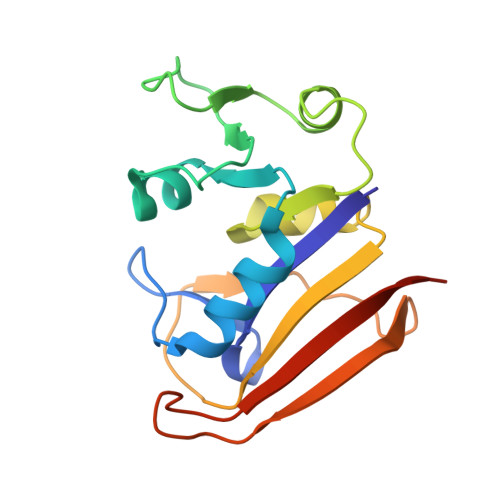Crystal Structures of Klebsiella pneumoniae Dihydrofolate Reductase Bound to Propargyl-Linked Antifolates Reveal Features for Potency and Selectivity.
Lamb, K.M., Lombardo, M.N., Alverson, J., Priestley, N.D., Wright, D.L., Anderson, A.C.(2014) Antimicrob Agents Chemother 58: 7484-7491
- PubMed: 25288083
- DOI: https://doi.org/10.1128/AAC.03555-14
- Primary Citation of Related Structures:
4OR7, 4OSG - PubMed Abstract:
Resistance to the antibacterial antifolate trimethoprim (TMP) is increasing in members of the family Enterobacteriaceae, driving the design of next-generation antifolates effective against these Gram-negative pathogens. The propargyl-linked antifolates are potent inhibitors of dihydrofolate reductases (DHFR) from several TMP-sensitive and -resistant species, including Klebsiella pneumoniae. Recently, we have determined that these antifolates inhibit the growth of strains of K. pneumoniae, some with MIC values of 1 μg/ml. In order to further the design of potent and selective antifolates against members of the Enterobacteriaceae, we determined the first crystal structures of K. pneumoniae DHFR bound to two of the propargyl-linked antifolates. These structures highlight that interactions with Leu 28, Ile 50, Ile 94, and Leu 54 are necessary for potency; comparison with structures of human DHFR bound to the same inhibitors reveal differences in residues (N64E, P61G, F31L, and V115I) and loop conformations (residues 49 to 53) that may be exploited for selectivity.
- Department of Pharmaceutical Sciences, University of Connecticut, Storrs, Connecticut, USA.
Organizational Affiliation:























